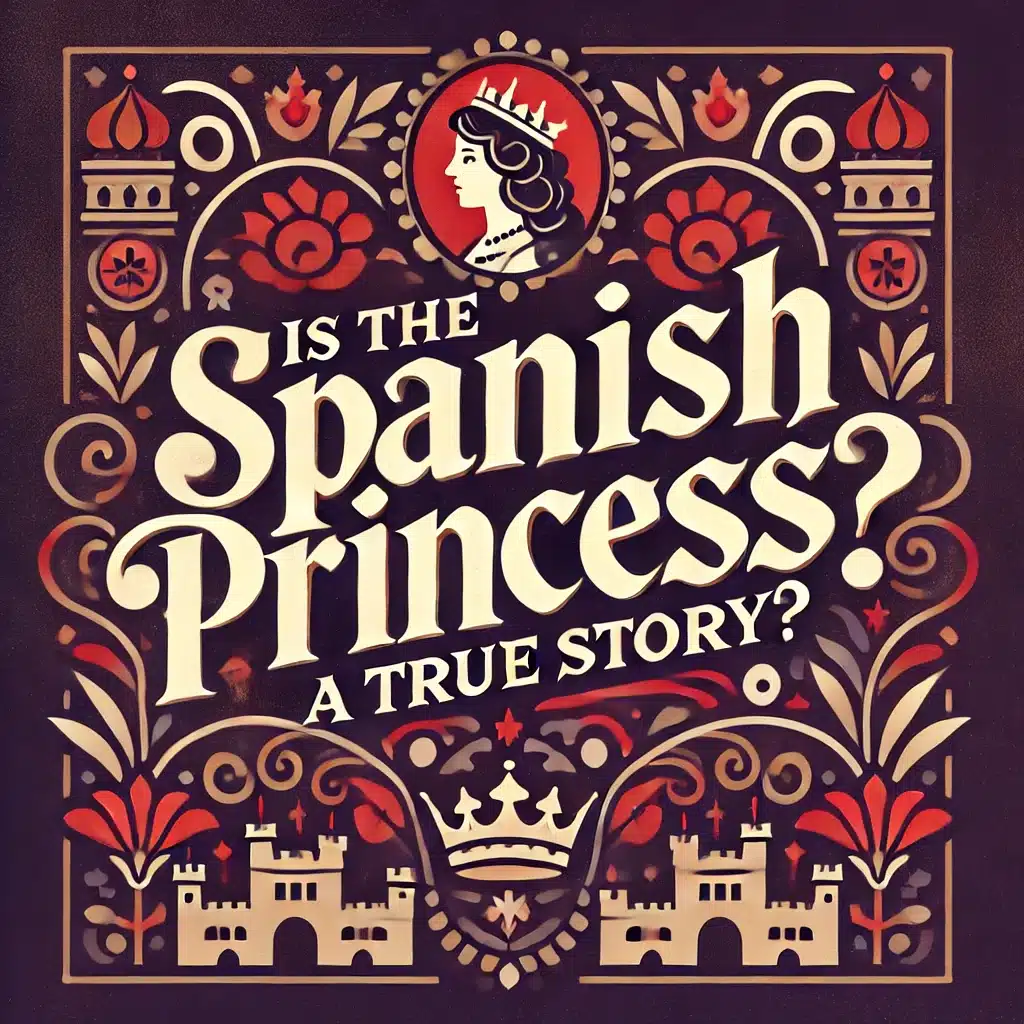The Spanish Princess is a TV series that dives into the life of Catherine of Aragon, the first wife of Henry VIII. Based on Philippa Gregory’s novels, the show mixes real history with fiction to create a dramatic story. But how much of it is true? In this article, we’ll explore the historical facts and the creative liberties taken in the series.
Key Takeaways
- The series takes creative liberties, often prioritizing drama over historical accuracy.
- Characters’ ages and relationships are sometimes altered for storytelling purposes.
- Some events in the show are entirely fictional or exaggerated.
- Philippa Gregory’s novels serve as the main source material for the series.
- The show aims to balance historical facts with modern sensibilities to engage the audience.
Exploring the Historical Context of The Spanish Princess
The Tudor Dynasty and Its Significance
The Tudor Dynasty was a major part of English history. It started with Henry VII and ended with Elizabeth I. This period saw many changes in politics, religion, and society. The Tudors were known for their strong rule and big changes. They helped shape modern England.
Catherine of Aragon’s Role in History
Catherine of Aragon was the youngest daughter of the Spanish rulers Ferdinand II of Aragon and Isabella I of Castile. She married Prince Arthur in 1501, but he died soon after. Later, she married his brother, Henry VIII. Catherine’s marriage to Henry was very important. It connected England and Spain and had a big impact on English history.
The Influence of Spanish Politics
Spanish politics played a big role in Catherine’s life. Her parents were powerful rulers in Spain. Their decisions affected Catherine’s life and her role in England. The alliance between Spain and England was important for both countries. It helped them in wars and trade. Catherine’s Spanish background influenced her actions and decisions as queen.
Character Portrayals and Historical Accuracy
Catherine of Aragon: A Closer Look
Catherine of Aragon is a multifaceted character with a rich backstory and a complex personality. The series attempts to capture her strength and resilience, but some aspects of her life are dramatized for effect. Her portrayal in the show often emphasizes her determination and intelligence, which aligns with historical accounts, though some events are exaggerated.
Henry VIII’s Depiction in the Series
Henry VIII is shown as a young, passionate king, which contrasts with the more mature and often ruthless ruler he became later in life. The age difference between Henry and Catherine is minimized in the series, making their relationship seem more relatable to modern audiences. This choice, while engaging, sacrifices some historical accuracy.
Supporting Characters and Their Real-Life Counterparts
The show features a range of supporting characters, each with their own historical significance. However, the relationships and interactions between these characters are sometimes altered to fit the narrative. For instance, the depiction of Prince Arthur Tudor’s early death is accurate, but other characters’ roles and personalities are often adjusted for dramatic effect.
The series takes creative liberties to make the story more engaging, but it’s important to remember that not all portrayals are historically accurate.
Dramatic Liberties Taken in The Spanish Princess
Age Differences Between Characters
One of the most noticeable changes in the series is the age differences between characters. In reality, Catherine of Aragon was six years older than Henry VIII, but the show portrays them as being much closer in age. This alteration helps to create a more romantic and relatable storyline for viewers.
Fabricated Events for Dramatic Effect
The series also includes several fabricated events that never happened in real life. These events are added to heighten the drama and keep the audience engaged. For example, certain confrontations and alliances are exaggerated or entirely invented to add tension and excitement.
Catherine’s Personal Struggles and Their Representation
Catherine of Aragon faced many personal struggles, and the show takes some liberties in how these are represented. While some aspects are true to history, others are dramatized to make her story more compelling. This includes her emotional battles and the challenges she faced in a foreign court.
It has been suggested that the series took unheard-of dramatic liberties in portraying members of the royal family, making the court seem more dominated by intrigue and conflict than it may have been in reality.
The Source Material: Philippa Gregory’s Novels
Overview of The Constant Princess
Philippa Gregory’s novel, The Constant Princess, serves as a primary source for the series. The book tells the story of Catherine of Aragon’s early life and her journey to becoming the Queen of England. It provides a detailed look at her struggles and triumphs, painting a vivid picture of her character and determination.
Themes in The King’s Curse
The King’s Curse continues the narrative, focusing on the later years of Catherine’s life. The novel explores themes of power, betrayal, and survival in a turbulent political landscape. It delves into the complexities of her relationships and the impact of her decisions on the Tudor dynasty.
Adaptation Choices for Television
The adaptation of these novels into the series required some creative liberties. While the core story remains true to the books, certain events and character interactions were altered for dramatic effect. This approach helps to create a more engaging and visually appealing narrative for the audience.
The series is based on the novel of the same name by Philippa Gregory. The novel follows on from the books The White Queen, The Red Queen, and The Kingmaker’s Daughter.
The adaptation choices reflect the need to balance historical accuracy with entertainment, ensuring that the essence of Catherine’s story is preserved while making it accessible to a modern audience.
Cultural Representation in The Spanish Princess
Diversity in Tudor England
The Spanish Princess brings a fresh perspective to the Tudor era by highlighting the diverse backgrounds of its characters. The series features not only Catherine of Aragon but also her ladies-in-waiting, Lina and Rosa, who add depth to the story. This approach allows viewers to see a more inclusive version of history, showcasing the rich heritage of the Spanish monarchy and the various cultures that influenced Tudor England.
Historical Accuracy vs. Modern Sensibilities
Balancing historical accuracy with modern sensibilities is a challenge for any historical drama. The Spanish Princess attempts to stay true to the period while also addressing contemporary issues such as race and class. This blend of old and new helps to make the story more relatable to today’s audience, even if it means taking some creative liberties with the facts.
Impact on Audience Perception
The portrayal of diverse characters and the inclusion of modern themes can significantly impact how audiences perceive historical events. By presenting a more inclusive and nuanced view of the past, The Spanish Princess encourages viewers to think critically about history and its relevance to the present day. This approach not only entertains but also educates, making the series a valuable addition to the genre.
Critical Reception and Audience Reactions
The series received mixed to positive reviews in the United States. On Rotten Tomatoes, part one of the series has an approval rating of 75% based on 12 reviews, with an average rating of 7.13/10. Metacritic assigned a score of 73 out of 100 based on six critics, indicating “generally favorable reviews”.
The Spanish Princess sparked curiosity in Spain upon release but later faced a combination of harsh criticisms and tired indifference. It was accused of “wild historical inaccuracy” and described by various media as “insulting,” “offensive,” and “full of stereotyping.” The newspaper ABC wrote that it “invents and humiliates [Catherine’s] history.” Despite this, the series managed to engage a significant audience interested in historical fiction.
Compared to other historical dramas, The Spanish Princess stands out for its focus on Catherine of Aragon, an often overlooked queen. While some praised its beautifully rendered historical set-pieces, others felt it did not fully realize its potential. The series blends soapy melodrama with historical elements, making it a unique addition to the genre.
The Legacy of Catherine of Aragon
Her Impact on English History
Catherine of Aragon was Queen of England as the first wife of King Henry VIII from their marriage on 11 June 1509 until its annulment on 23 May 1533. Her marriage to Henry VIII had a profound impact on English history. Catherine’s steadfastness in her role as queen and her refusal to accept the annulment led to the English Reformation, a major shift in religious and political power in England.
Catherine’s Representation in Popular Culture
Catherine of Aragon has been depicted in various forms of media, from books to television series. In “The Spanish Princess,” she is portrayed as a strong and determined woman, which aligns with historical accounts of her character. This representation helps to keep her legacy alive and introduces her story to new generations.
Lessons from Her Life and Reign
Catherine’s life teaches us several important lessons:
- Resilience: Despite numerous challenges, Catherine remained steadfast in her beliefs and duties.
- Courage: She faced immense pressure but never wavered in her stance.
- Influence: Her actions had long-lasting effects on English history and the church.
Catherine of Aragon went out steadfast in her love for Henry and her right to call herself queen. Catherine, we bow down to you, a true queen if there ever was one.
Conclusion
In the end, while The Spanish Princess offers a captivating glimpse into the life of Catherine of Aragon, it is important to remember that it is a work of historical fiction. The series takes creative liberties to enhance the drama and intrigue, often straying from the actual events. Despite these deviations, it succeeds in bringing the story of a remarkable woman to a modern audience. By blending fact with fiction, The Spanish Princess not only entertains but also sparks interest in the real history behind the characters and events it portrays.
Frequently Asked Questions
Is The Spanish Princess based on a true story?
The Spanish Princess is based on historical events, but it takes creative liberties for dramatic purposes. It is inspired by Philippa Gregory’s novels, which are also historical fiction.
Who was Catherine of Aragon?
Catherine of Aragon was the first wife of King Henry VIII of England. She was originally from Spain and played a significant role in English history.
How accurate is the portrayal of Henry VIII in The Spanish Princess?
The series takes some liberties in depicting Henry VIII. While some aspects are true to history, others are altered for dramatic effect.
What are some major differences between the show and real history?
One notable difference is the age gap between characters. The show also fabricates certain events to enhance the drama.
Are Philippa Gregory’s novels historically accurate?
Philippa Gregory’s novels are based on historical events but include fictional elements. They should be viewed as historical fiction rather than factual accounts.
How has The Spanish Princess been received by audiences?
The series has received mixed reviews. Some viewers appreciate the drama and character portrayals, while others criticize the historical inaccuracies.




